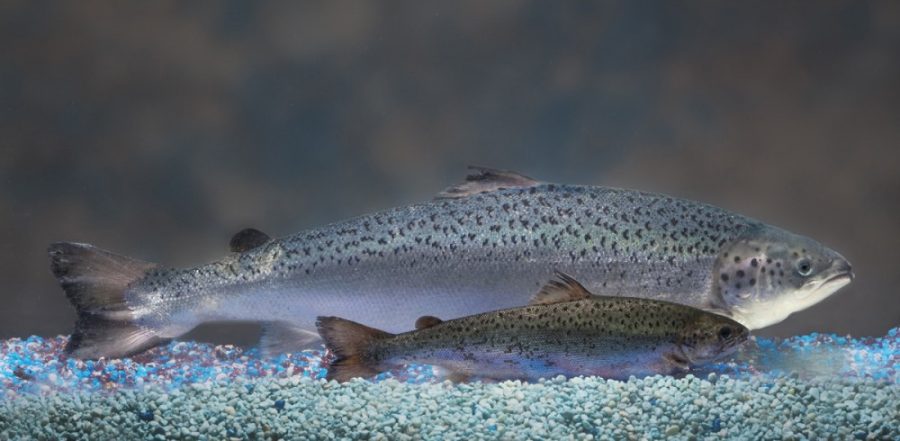WASHINGTON — Beyond sharp and predictable differences over whether genetically engineered salmon belongs in the food supply, a rough consensus emerged Tuesday at a Food and Drug Administration hearing on future labeling requirements: If approved for the market, consumers should have a way of avoiding it.
The sticking point: who should bear the burden of communicating the information consumers would need in order to tell whether fish had been genetically altered.
The unusual hearing to collect public comment on potential labeling requirements followed a meeting Monday at which a panel of outside experts seemed generally persuaded of the FDA’s preliminary conclusions that the AquaBounty Technologies Inc.’s salmon is safe for human consumption and poses little risk to the environment.
But the committee nonetheless recommended more study.
The caution of the committee and the FDA’s willingness to convene a meeting to discuss labeling — something the agency says it’s not required to do — reflect the stakes:
If approved by the FDA, the AquaBounty salmon would be the country’s first genetically engineered food animal.
Opponents of the fish insisted on a straightforward solution, simply requiring that fish producers label the salmon as genetically engineered.
But that marches straight into the teeth of FDA rules, which prohibit the labeling of food solely on the basis of how it was produced — such as by genetic engineering.
The FDA requires labeling only of a “”material difference”” resulting from a production process, such as a difference in texture or nutrient content — not the process itself.
So far, the agency has not found any differences that would require the AquaBounty salmon to be labeled differently from an ordinary salmon.
Michael Landa, acting director of the FDA’s Center for Food Safety and Applied Nutrition, said the agency is not seeking to change its labeling rules, but recognizes that the unique nature of the AquqBounty application has generated intense interest.
“”We’re presenting an opportunity for people to explain to us if there are material differences, if so, what they are and how they might be disclosed,”” Landa said.
Elliot Entis, founder of Waltham, Mass.-based AquaBounty, said a mandatory label would be unfair to his company because it would be interpreted by consumers as a warning.
Entis said he supported voluntary labeling by producers who wanted to communicate that their fish was not genetically engineered.
But Patricia Lovera, of Food and Water Watch, said voluntary labeling is needlessly complex and puts too much of a burden on consumers and producers.
“”It’s a messy, messy area to put this on a voluntary labeling scheme,”” Lovera said.
Lovera and several other speakers said they disagreed with the FDA’s conclusion that the fish are the same and urged the agency to break with its practice and require a label specifying AquaBounty’s engineered origins if only so could consumers could make up their own minds about whether or not to buy.
“”The least you can do if you put these products on the market is let consumers decide,”” Lovera said.
But the FDA says that consumer interest by itself cannot determine label content.
For example, in the 1990s, FDA turned back demands by some consumer and farm groups to require milk producers to disclose if their milk came from cows given genetically modified hormones because it had determined that there was no material difference between milk from treated and untreated animals.
When some producers labeled their milk as hormone-free, FDA required producers to add information that the agency had found no difference in milk from either treated or untreated cows.
Bruce Chassy, a professor of food microbiology at the University of Illinois in Champaign-Urbana, said there are no grounds for mandating a label for the AquaBounty salmon and that a voluntary labeling program could effectively guide consumers as long as they are willing to bear cost of verification and other expenses in the form of potentially higher prices.
“”It’s not free,”” he said.
Chassy said later that FDA may wind up with a labeling program similar to what it settled on for milk. It would allow fish producers to label their salmon as non-genetically engineered as long as they carried a disclaimer indicating the FDA’s position that the tweaked fish was no different than an ordinary salmon.
A final decision on the salmon, and its label, appears to be months off. Tuesday’s hearing marked the beginning of a 60-day period for further public comment on what an AquaBounty salmon label should or shouldn’t say.









